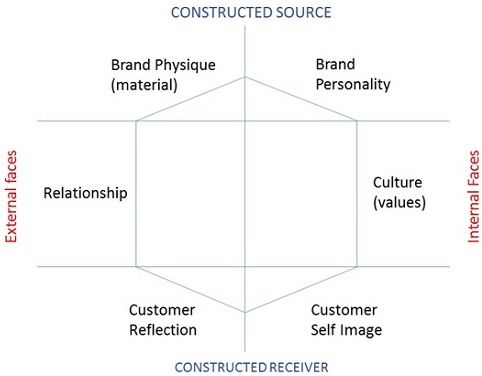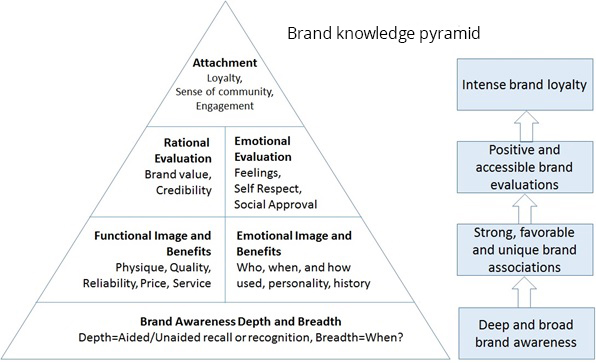
- Brand Management Tutorial
- Brand Management - Home
- Basic of Branding
- Brand Management - Overview
- Brand Management - Diversity
- Inside Brand Management
- Brand Management - Equity
- Brand Management - Equity Models
- Brand Management - Architecture
- Brand Identity and Positioning
- Brand Management - Promotion
- Brand Management - Extension
- Brand Management - Co-branding
- Maintaining The Brand
- Brand Management - Performance
- Brand Management - Leveraging
- Brand Management - Valuation
- Brand Management Resources
- Brand Management - Quick Guide
- Brand Management - Useful Resources
- Brand Management - Discussion
Brand Identity & Positioning
In today’s market, the customer has a very wide choice of products. When it comes to brands, he chooses brands but he tends to compare the products of different brands. Products increase customer’s choice whereas brands simplify decision making. To influence the customer’s buying decision and to get hold of the competitor’s market share, brand identity and positioning are essential.
Brand management works with these two fundamental tools, brand identity and brand positioning. Let us understand these terms −
Brand Identity
It specifies that a brand has a goal that is different from the goals of other parallel brands in the same market segment and it has resistance to change. It is defined clearly and does not change over time.
Brand identity is fixed in nature being tied to the fixed parameters such as brand’s vision, objective, field of competence, and overall brand charter.
Brand Positioning
Brand positioning is emphasizing on the distinguishing characteristics of the brand, those that make the brand appealing to the consumers and stand out among its competitors. It specifies how the products of a brand penetrate the market to grow their market share while dealing with the competitor brands. Brand positioning is competition oriented and hence dynamic over a period of time.
Six Faces of Brand Identity
Brand identity can be represented by six faces of a hexagon or a prism as shown below −

Brand Physique − It is the tangible and physical added value, as well as the backbone of a brand. It considers physical aspect of brand: How does it look, what does it do, the flagship product of the brand, which represents its qualities. For example, the dark color of Coke and colorless Sprite.
Brand Personality − If a brand were a person, what kind of person it would be? Would it be sincere (TATA Salt), exciting (Perk), rugged (Woodland), sophisticated (Mercedes), elite (Versace)? The brand has personality which speaks for its products and services.
When a famous character, spokesperson, or a figurehead is used for branding, it gives the brand an instant personality.
Culture − It is the set of values that governs and inspires the brand. Countries of origin, presence of brand over geographically diverse regions, changing society, etc., play an important role in building a brand’s culture.
Customer Self-Image − It is what the brand is able to create in the customer’s mind and how the customers perceive about themselves after purchasing the product of a brand.
Customer Reflection − It is the perception of a customer about the brand after using the brand. For example, “The Thunderbird I purchased is value for price. It is giving me pleasure of leisure riding. Thanks to Royale Enfield.”
Relationship − Brands communicate, interact, transact with the consumer. It is the mode of conduct that defines the brand. This factor is vital for service brands. For example, banking where the cordial relationship develops faith in the customers when it comes to handling their money with respect.
Brand Knowledge
Keller defines brand image as awareness of brand name (whether and when customers know the brand and can recall it) and belief about brand image (customer’s associations with the brand). If either of both is created successfully while leaving the other one in poor state, it brings down the brand drastically.
For example, Salman Khan is a brand in himself with very high awareness. But his image went bad due to the hit-and-run case and that spoiled his reputation.

Creation of Brand knowledge is a collective effort of consumer, marketer, researchers, distributors, and ad agencies.
Creating brand knowledge is extremely important for the company’s stakeholders.
Brand Portfolios and Market Segmentation
There can be a single brand portfolio or multiple brand portfolios. The companies decide courageously to create a new brand for its growth when the existing brand does not perform satisfactorily.
There is a wide variety of consumers in terms of their behavior, economic status, tastes, genders, age groups, and preferences. If the market segmentation is too diverse, it becomes hard for a single brand to meet the demand of maximum consumers. Thus, the main objective of creating a multi-brand portfolio is to meet the demands of the segmented market in a better way.
To avoid the conflicts with the existing brand and the market segment, the companies are inclined towards creating a new brand each time it ventures into a new market segment. A multi-brand portfolio covers large market segment and can stop entry of any new competitor in the market.
Key Rules of Managing Multi-Brand Portfolio
Place and operate the brands within a portfolio with strong coordination.
Set clear and precise charter and identity for each brand.
Build strong brand architecture. Position the brands to increase their appropriateness and target market.
Focus on a particular competitor for each brand.
Keep corporate organization and brand portfolio matched.
General Steps of Brand Building
Brand stays in the minds of consumers and helps the company to grow their market share and revenue. Here are few basic steps to build a strong brand −
Study the market, need of the hour, competitors, and target audience. Study the purpose of what you wish to accomplish through the brand.
Decide brand personality, culture, and profile. Think of distinctive features to stand out from the competitors.
Identify how the stakeholders perceive the brand. Bridge the perception gaps.
Decide where you want the brand to position in the market.
Create a plan and work on strategies where you want to place the brand.
Communicate the brand to consumers via TV ads, social media, online marketing, etc.
Make sure the consumers remember the brand.
Evaluate if the consumers are influenced in a right way and if you have accomplished the purpose.
Identifying and Establishing Brand Positioning
To identify brand positioning, the brand manager needs to study the market segment of venture. To establish a strong brand positioning, you need to get clear answers to the following questions −
Brand for what benefit?
For example, The Body Shop uses natural ingredients in its products and is environment-friendly. Tropicana packs real fruit juices in tetra packs, etc.
Brand for whom?
It is the target audience of the brand grouped as gender, age, economic bracket, etc. For example, while Nike is top clothing brand for all income group, Gucci and Fossil remain high income handbags brands.
Brand for what reason?
These are the facts that support claimed benefits.
Brand against whom?
This defines the way to attack competitors’ market share.
There is a standard formula to achieve brand positioning −
For … (target market of potential buyers or consumers) Brand X is … (definition of frame of reference and category) Which gives the most … (promise or consumer benefit) Because of … (reason to believe)
Where,
The target market is the psychological and social profile of the consumers a brand aims to influence.
Frame of reference is the nature of competition.
Promise or consumer benefit is the feature that creates preference and drives decision after making choice. For example, Cadbury promises its Silk chocolate bars to be the smoothest ones among other Cadbury chocolate bars.
The reason to believe is reinforcement of promise or consumer benefit. For example, Tropicana Products, the producer and marketer (a division of PepsiCo), promises to be delivering 100% pure fruit juices in its Pure Premium juices range.
Let us take an example of brand positioning conducted by Shoppers Stop, the retail chain in India that sells retail clothing, handbags, jewelry, perfumes, toys, home furnishing, and accessories. It has business of 20 billion dollars. It was founded in 1991 with first store at Mumbai and expanded rapidly across the country soon. The consumers perceived it as mass market brand and it started losing its shine in the retail competition in 2008.
The brand managers and company management together carried out a store audit at all outlets, studied customer experiences, updated brand identity, and came up with new tagline, “Start something new”. It then repositioned the brand as premium, accessibleluxury sector. This position of bridge-to-luxury appealed young, middle-class consumers in India, who had their own money to spend at a young age. The new repositioning also added the credibility of Shoppers Stop to preset itself as a potential partner for international brands who were looking to enter the Indian market.


The impact was, its share price grew 450% from 52-week low, sales rose more than 10%, and as newly acquired strength of positioning the brand, it started co-branding with international brands such as Chanel, Dior, Armani, Esprit, Tommy Hilfiger, Mothercare, Mustang, Austin Reed, and so on.
Defining and Establishing Brand Values
Consumers are interested in brand values. When the consumer understands the brand value, he can interact with the business in a particular way.
For defining and establishing brand values, you need to take an honest look at the product or service. You can proceed by using the following steps −
Step 1 − Find out the answers for the following questions −
- What unique and competing feature my product/service has?
- Why should the target audience take interest in my product/service?
- What is my passion being a product manufacturer/service provider?
Step 2 − Compile a list of values related to the product/service, such as −
- Simplicity
- Quality
- Affordability
- Timeliness
- Politeness
- Integrity
- Creativity
- Innovation
- Commitment
Step 3 − Narrow down the list of values.
Bring down the list of values which are absolutely indisputable for execution of your business. Recommended number of values is three to four.
For example, if your brand’s value is timeliness then make sure you keep the promise of shipping and delivery of products always on time, handle and reply to your customer inquiries in timely manner, attend the customer’s call in the shortest possible time etc. Make sure that the value is always consistently honored, despite any internal or external situation.
Step 4 − Use the list as a reference.
Use the list of brand values while creating new products or services, dealing with clients, consumers, and partners.
Branding for Global Markets
Venturing into global markets is inevitable for brands. A brand is global when it is visible and sold at every possible place in the world. The consumer around the world become aware of various international brands if they travel worldwide or just watch a satellite television at home.
Before you take the brand in the global market, you need to cater to various aspects of the global consumer such as −
Culture of Consumers −
- The values the consumers follow
- The customs they observe
- Particular symbols and language they use
- The tone of their behavior
- Consumer’s level of income and buying power
Economic status of the country in terms of −
- Power supply
- Infrastructure
- Communication systems
- Distribution systems
Laws and Regulations enforced −
- Is it lawful there too?
- Political stability of the country
When the brand transits from local to global, it competes with other global brands. For example, Nokia battles Motorola and Samsung. The brand managers must manage the transnational brand to remain superior on the essentials such as the brand’s price, performance, features, and imagery.